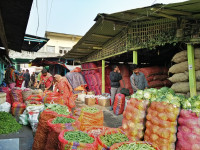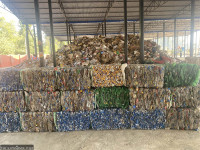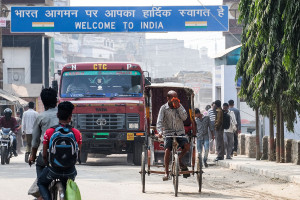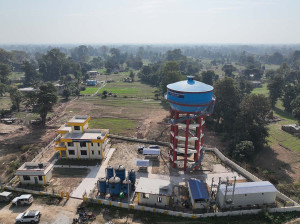Money
Pesticide-packed vegetables flood Kathmandu markets again
Tests find alarmingly high levels of pesticides in chilli, green pumpkin, and other vegetables. Experts warn of rising health risks amid poor farming practices and lax oversight.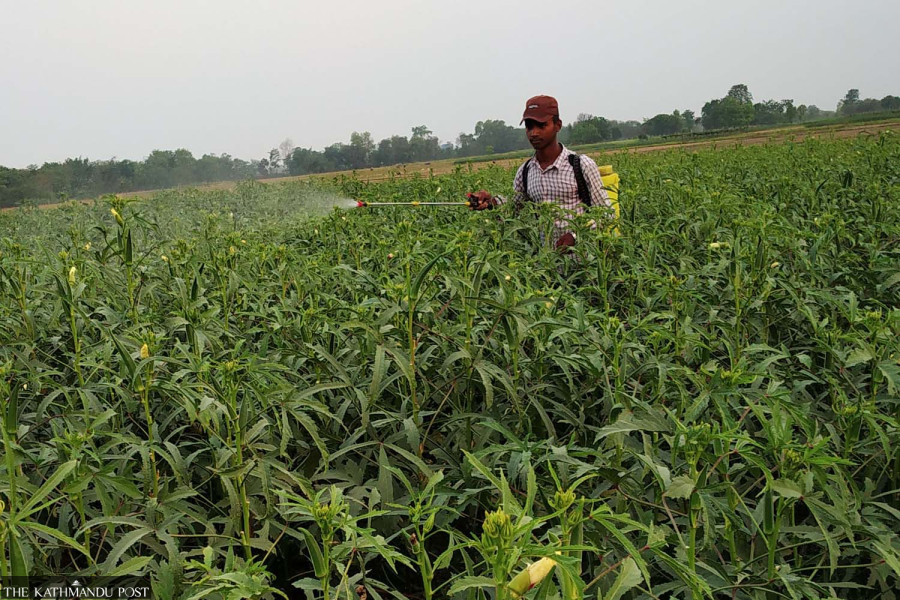
Krishana Prasain
Pesticide-laced vegetables have once again flooded markets in the Kathmandu Valley, despite repeated warnings from government laboratories about chemical contamination.
On Monday, laboratory tests on round chilli (akabare khursani) detected dangerously high concentrations of harmful chemicals. More than 30 kg of the chilli were destroyed after being declared unfit for human consumption.
According to the Rapid Bioassay of Pesticide Residue (RBPR) Analysis Unit, round chilli samples from Makawanpur contained organophosphate pesticides at 57.07 percent—far above the safe limit. The lab said residue below 35 percent is considered safe, while levels between 35 and 45 percent may be consumable only after a waiting period. Anything above 45 percent is unsafe and must be discarded.
Similar contamination has been found in other vegetables. Last Thursday, samples of green pumpkin from Makawanpur showed organophosphate pesticide levels of 45.59 percent, while sponge gourd from Dhading contained 65.03 percent, and cucumber from Kathmandu had 52.92 percent. As a result, 62 kg of green pumpkin, 5 kg of sponge gourd, and 45 kg of cucumber were destroyed, according to an official at the Central Agricultural Laboratory in Harihar Bhawan, Lalitpur.
Most of the vegetables tested by the lab are sold through the Kalimati Fruits and Vegetable Market—the country’s largest wholesale hub supplying the entire Kathmandu Valley. Lab findings reveal that much of the produce sold there is cultivated using organophosphate pesticides, which are more toxic than carbamates.
Both organophosphate and carbamate pesticides are classified as highly hazardous. These chemicals are neurotoxic (capable of damaging the human nervous system), and can lead to long-term health complications. They also contribute to soil and water pollution, threatening environmental sustainability.
Officials say farmers have been overusing pesticides to speed up crop growth and protect against pests, often disregarding safe practices. The problem has worsened due to new pest species attributed to changing climate conditions. This has fueled a sharp increase in pesticide imports and usage across the country.
“Most farmers do not follow good agricultural practices and are unaware of the proper way to use pesticides,” said Mahesh Timilsina, assistant information officer at the Central Agriculture Laboratory under the Ministry of Agriculture and Livestock Development.
Good agricultural practices (GAP) are designed to enhance the safety, quality, and sustainability of food production while safeguarding the environment and livelihoods. But experts say such practices are rarely implemented effectively in Nepal.
“Farmers often spray pesticides just before taking their vegetables to the market to keep them looking fresh. This is the main problem,” Timilsina said. “If they used the recommended amount and observed the waiting period before harvest, the residue levels would fall within safe limits.”
In response to repeated contamination incidents, the government has expanded the number of samples tested daily at the Kalimati lab. Previously, the lab tested seven to eight types of vegetables each day, but now it examines 17 to 18 varieties, officials said.
Timilsina noted that the surge in commercial vegetable farming across the country has gone hand in hand with rising pesticide use. “The government’s efforts to raise awareness about pesticide risks remain insufficient,” he said.
Traders and farmers reportedly apply pesticides immediately before market delivery to keep vegetables fresh and visually appealing, helping them fetch better prices. Most of the vegetables sold in Kalimati come from key agricultural districts, including Makawanpur, Kavrepalanchok, Sarlahi, Bara, Chitwan, and Dhading.
Routine tests show that popular seasonal vegetables—such as leafy greens, broccoli, tomatoes, and cauliflower—frequently exceed safe pesticide levels.
In January, 600 kg of leafy greens were discarded from the Kalimati market after tests confirmed high contamination. Similarly, in April, 32 kg of beans were destroyed after the lab detected 92.45 percent organophosphate residue. In May, broccoli samples showed 93.91 percent, long yard beans had 95.27 percent, and bitter gourd from Chitwan contained 75 percent pesticide residue.
The World Health Organisation warns that pesticides can be toxic, causing both short-term and chronic health effects depending on the level and duration of exposure. Nepal’s agricultural authorities have also recorded a sharp rise in the use of hazardous pesticides, herbicides, and chemical fertilisers in recent years, raising growing public health and environmental concerns.




 19.12°C Kathmandu
19.12°C Kathmandu
